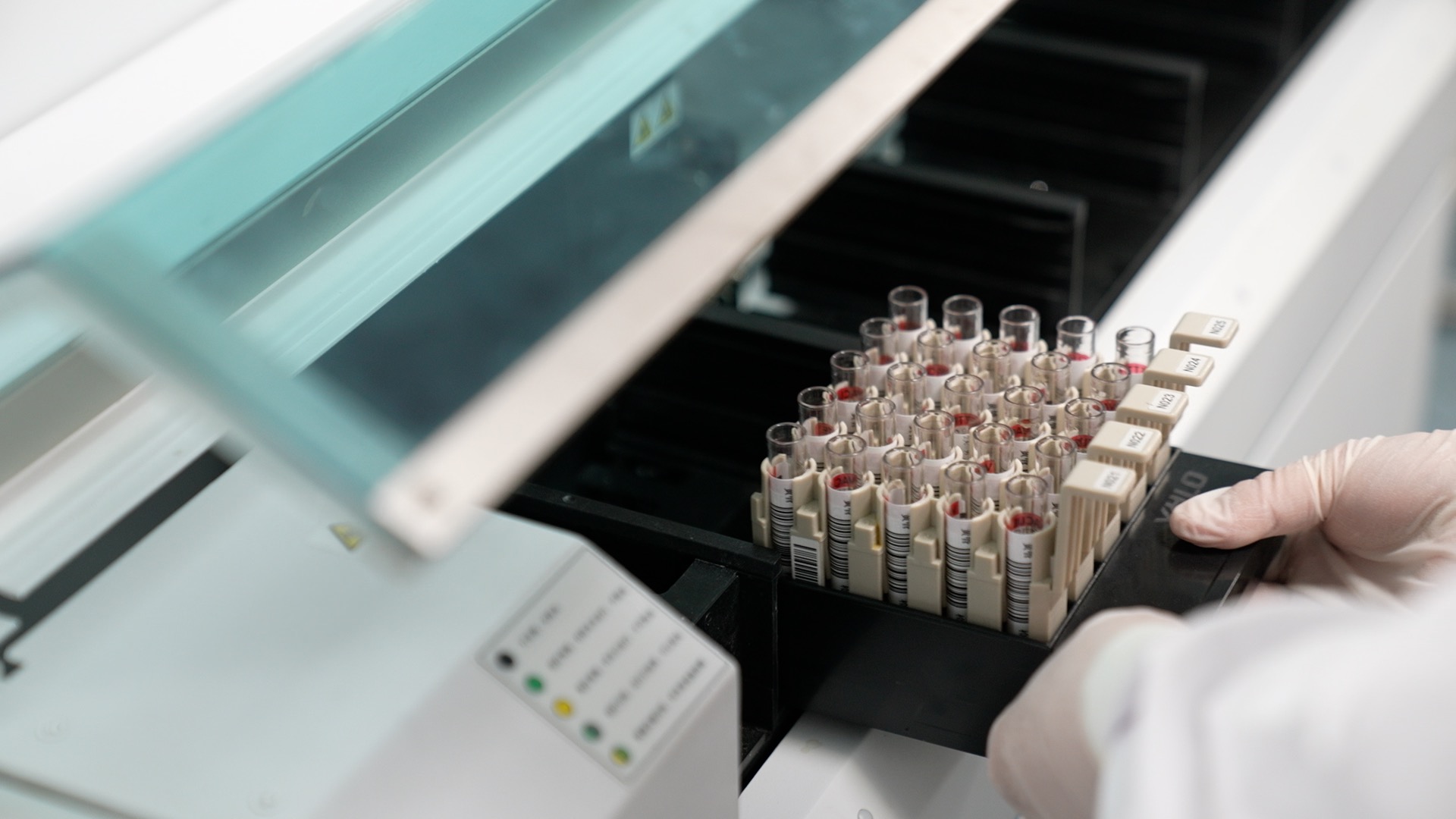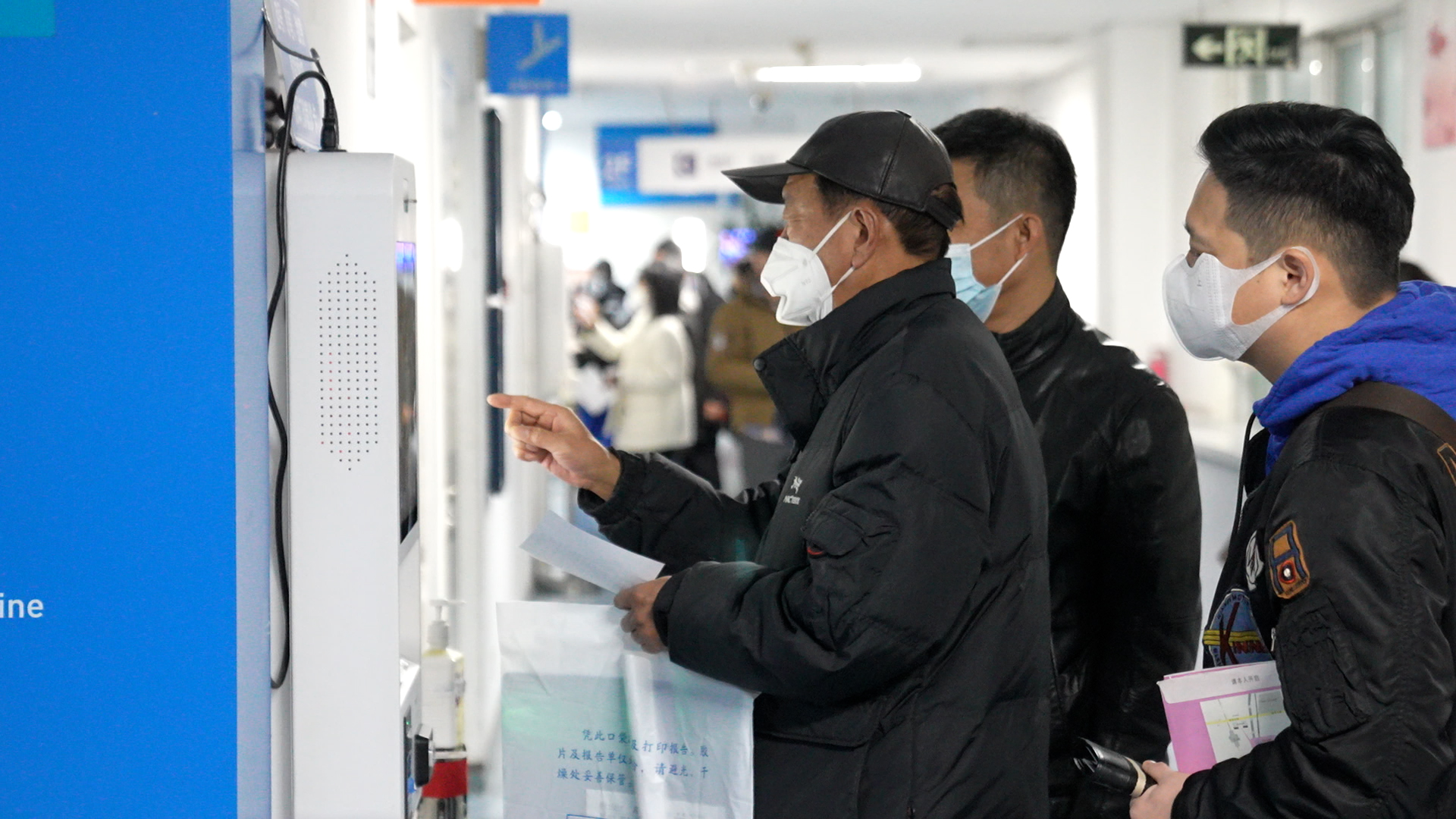03:31

Since November 2022, the country has been optimizing its response measures to safeguard health and prevent severe cases, and secured a smooth transition within a relatively short period of time, according to a meeting of the Standing Committee of the Political Bureau of the Communist Party of China (CPC) Central Committee on February 16, adding that the country has scored a major and decisive victory in epidemic response.
CGTN talked with three doctors at China-Japan Friendship Hospital (CJFH), a tertiary hospital with a large number of beds that provide comprehensive medical services, about how the current situation of COVID-19 in their hospital and what experience they've got during this round of epidemic wave.
According to the CJFH, it has passed the peak period of severe COVID-19 patients at the fever clinic and emergency department in mid-to-late December 2022.
The hospital allocated medical personnel to the clinic and the department, expanded the capacity of the emergency department, as well as transformed some of the pediatric wards into the emergency department. It also added intensive care beds (ICU) in other departments to save the lives of critically-ill patients.
There are now over 10 severe cases in ICU, most of them are elder people with underlying diseases, according to Zhan Qingyuan, deputy director at the Department of Pulmonary and Critical Care Medicine of the CJFH.
Sporadic cases
COVID-19 has "basically ended" in the country, but it is not "completely over" as there still exists sporadic cases, said Liang Wannian, head of the COVID-19 response expert panel at China's National Health Commission (NHC).
Currently, sporadic cases are very few with mild symptoms, Zhan told CGTN, adding that people are likely to be living with the novel coronavirus for the long term.
To the elderly with underlying conditions, Zhan said vaccination offers the best protection. Besides that, a thermometer, antigen reagents and COVID-19 drugs should be prepared.
Zhong Lintao, director of the Nosocomial Infections Management Office of the CJFH, said that the hospital has accumulated much experience in this round of COVID-19 epidemic, and can transform from normal operations to respond to epidemic rapidly, so to ensure timely treatment of critically-ill patients.

People pay at a self-service kiosk at China-Japan Friendship Hospital, Beijing, China, February 24, 2023. /CGTN
People pay at a self-service kiosk at China-Japan Friendship Hospital, Beijing, China, February 24, 2023. /CGTN
Seasonal influenza
Now, the hospital has been operating at the pre-epidemic level. The average number of patients seeking treatment at the fever clinic is about 100 a day, and some of which are caused by seasonal influenza, according to the hospital.
Cases of influenza are similar to that of before the epidemic, or even much less than before, Zhong said, adding that the lower infection rate of influenza is largely due to wearing masks, trapping its transmission.
According to data from Beijing Center for Disease Control and Prevention, the number of influenza cases between February 13 and 19 was up 91 percent from the previous week and down 61 percent from the same period in 2019.
It's possibly just a partial outbreak, instead of a pandemic, Zhong said.
Antibody tests
Recently, Beijing and central China's Hunan and Hubei provinces have launched COVID-19 antibody tests, a serological test to detect antibodies to the SARS-CoV-2 virus, the virus causing COVID-19.
The hospital launched COVID-19 antibody tests in early 2021 to monitor and evaluate population levels of immunity. Recently, it still tests about 40 cases a day on average.
The antibody positivity rates were higher after the country downgraded its management of the epidemic into Class B infectious diseases, said Ma Liang, deputy director at the Department of Clinical Laboratory of the CJFH.
There are two indicators for antibody tests, IgM and IgG, with the latter appearing to decrease more slowly over time than the IgM antibody. If a person has COVID-19 antibodies, it suggested past infection or vaccination.
For people with underlying diseases or low immunity and the elderly, antibody tests may help them see if there are antibodies to the virus in the body, which can help them determine whether to get booster shots, according to Ma.
Videographer: Yang Zhigang
Video editor: Zhao Zhuoyi
(A medical worker puts COVID-19 antibody reagents into a device for testing at the China-Japan Friendship Hospital, Beijing, China, February 24, 2023. /CGTN)